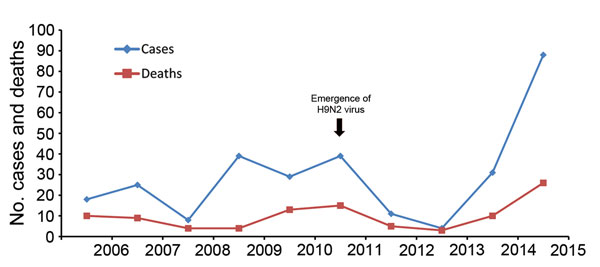Volume 22, Number 3—March 2016
Synopsis
Avian Influenza A(H5N1) Virus in Egypt
Figure 6

Figure 6. Human cases of avian influenza A(H5N1) virus infection and associated deaths, Egypt, 2006–2015. Data for 2015 include cases confirmed in January and February only. For reference, the emergence of H9N2 virus in poultry is shown (arrow).
Page created: February 16, 2016
Page updated: February 16, 2016
Page reviewed: February 16, 2016
The conclusions, findings, and opinions expressed by authors contributing to this journal do not necessarily reflect the official position of the U.S. Department of Health and Human Services, the Public Health Service, the Centers for Disease Control and Prevention, or the authors' affiliated institutions. Use of trade names is for identification only and does not imply endorsement by any of the groups named above.